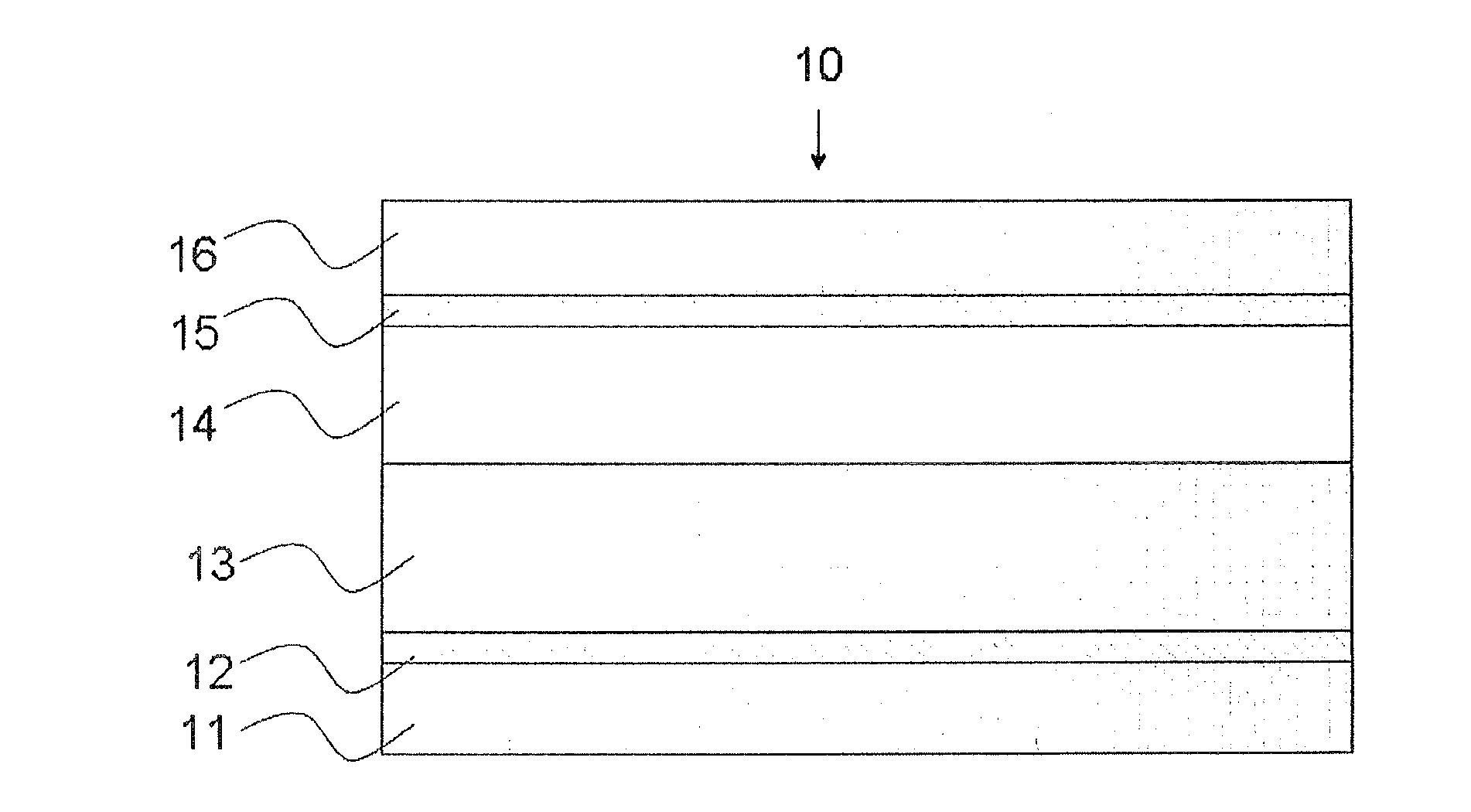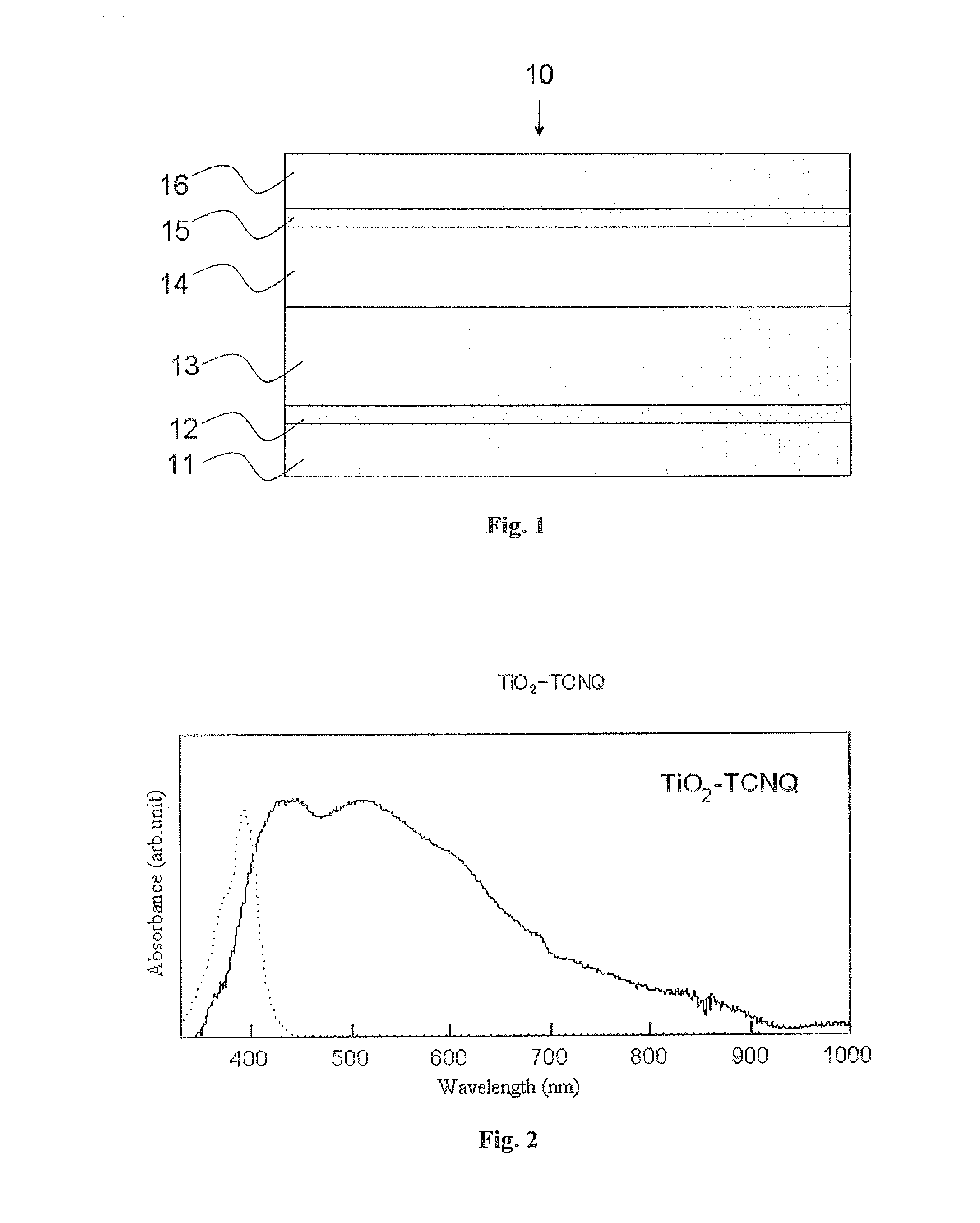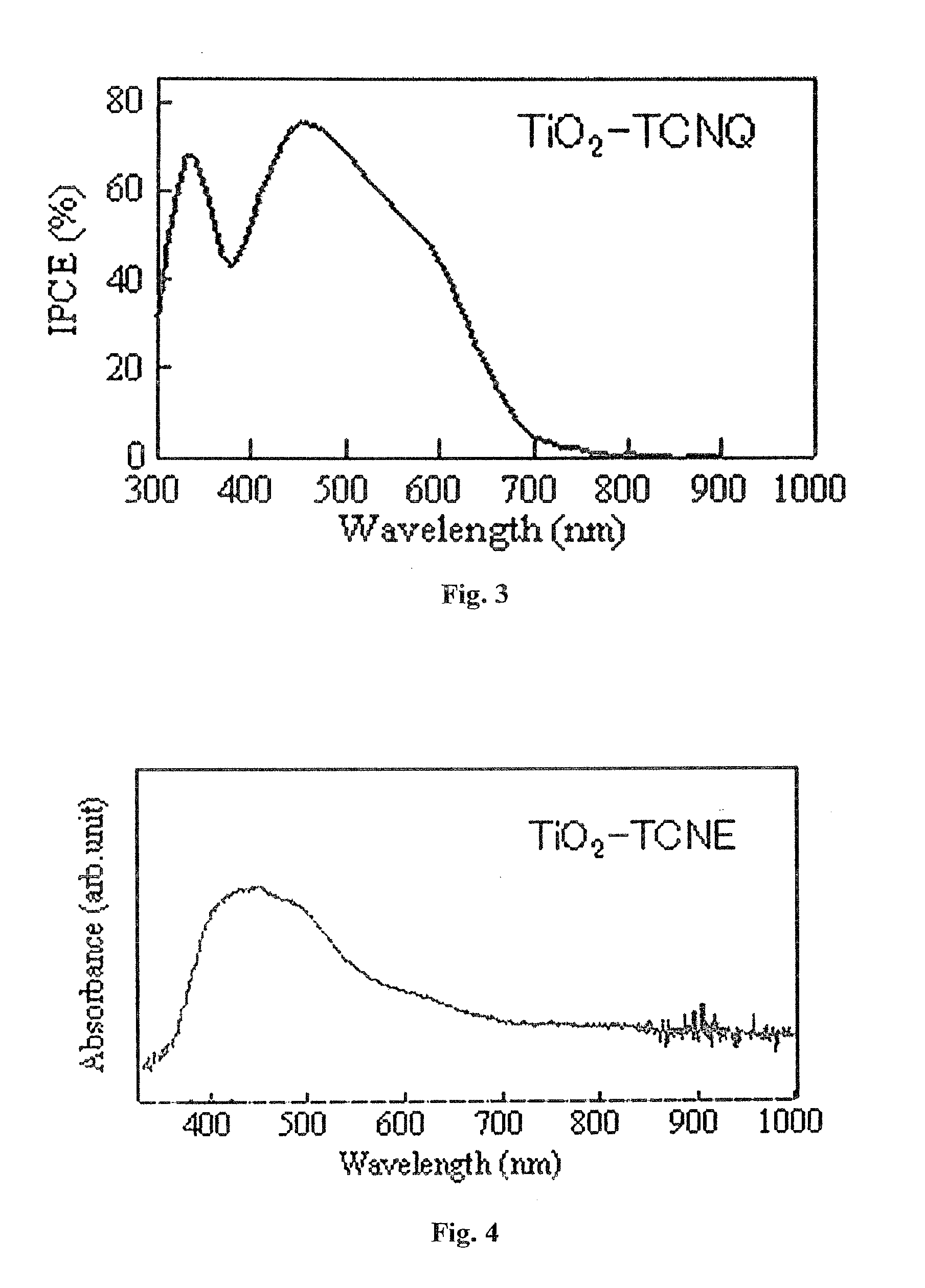Hybrid and/or complex material, photoelectric conversion material, dye-sensitized solar cell, dye-sensitized solar cell device, manufacturing method of photoelectric conversion device, and method of analyzing titanium oxide crystal structure
a technology of complex materials and photoelectric conversion devices, applied in the direction of anthracene dyes, sustainable manufacturing/processing, instruments, etc., can solve the problems of increasing the synthesizing cost and still a lot of obstacles to overcome for further commercialization, and achieve the effect of high-efficiency photoelectric conversion materials
- Summary
- Abstract
- Description
- Claims
- Application Information
AI Technical Summary
Benefits of technology
Problems solved by technology
Method used
Image
Examples
example 1
Forming of Photoelectric Conversion Layer
[0115]A titania paste Ti-Nanoxide T / SP manufactured by Solaronixs Corp. was applied with coating by a screen printing method on a glass substrate with FTO film having surface resistance value of 10 Ω / sq whose size is 15 mm×25 mm and was dried for 3 minutes by 120° C. The coating-applied substrate was sintered for 30 minutes by 500° C. When the film thickness of the titania semiconductor layer after the sintering was measured by a needle contact type film thickness meter, it was found out that the thickness was 20 μm. An acetonitrile solution (concentration: 3 mM) of the organic molecule expressed by TCNQ (7,7,8,8-tetracyanoquinodimethane) was prepared and by dipping aforesaid titanium oxide substrate therein for 190 hours, there was formed a photoelectric conversion electrode.
[0116]—Evaluation of Photoelectric Conversion Layer—
[0117]FIG. 2 is a diagram showing an absorption spectrum (a) of an acetonitrile solution of TCNQ and an absorption sp...
example 2
Forming of Photoelectric Conversion Layer
[0123]A photoelectric conversion layer was formed similarly as that of the example 1 other than that the organic molecule TCNQ was changed to the organic molecule TCNE. In FIG. 4, there are shown an absorption spectrum (a) of an acetonitrile solution of TCNE and an absorption spectrum (b) of a titanium oxide after the dipping into the acetonitrile solution. In the drawing, a solid line denotes a diffuse reflection difference spectrum and a broken line denotes an absorption spectrum of the acetonitrile. The absorption spectrum of this titanium oxide was different from the absorption spectrum of the acetonitrile solution of TCNE and presented an absorption from a visible region.
[0124]—Production of Solar Cell—
[0125]A solar cell was produced by a procedure similar to that of the example 1.
[0126]—Evaluation of Solar Cell Performance—
[0127]The IPCE (Incident-Photon Conversion Efficiency) of the solar cell was measured in a range from 300 nm to 110...
example 3
—Forming of Photoelectric Conversion Layer—
[0129]A photoelectric conversion layer was formed similarly as that of the example 1 other than that the organic molecule TCNQ was changed to the organic molecule TCNQ-F4. In FIG. 6, there are shown an absorption spectrum (a) of an acetonitrile solution of TCNQ-F4 and an absorption spectrum (b) of a titanium oxide after the dipping into the acetonitrile solution. The absorption spectrum of this titanium oxide was different from the absorption spectrum of the acetonitrile solution of TCNQ-F4, and presented absorption from a visible region beyond a near-infrared region.
[0130]—Production of Solar Cell—
[0131]A solar cell was produced by a procedure similar to that of the example 1.
[0132]—Evaluation of Solar Cell Performance—
[0133]The IPCE (Incident-Photon Conversion Efficiency) of the solar cell was measured in a range from 300 nm to 1100 nm. As a result thereof, as shown in FIG. 7, it was possible, from ultraviolet beyond 650 nm, to obtain a h...
PUM
| Property | Measurement | Unit |
|---|---|---|
| wavelengths | aaaaa | aaaaa |
| temperature | aaaaa | aaaaa |
| temperature | aaaaa | aaaaa |
Abstract
Description
Claims
Application Information
 Login to View More
Login to View More - R&D
- Intellectual Property
- Life Sciences
- Materials
- Tech Scout
- Unparalleled Data Quality
- Higher Quality Content
- 60% Fewer Hallucinations
Browse by: Latest US Patents, China's latest patents, Technical Efficacy Thesaurus, Application Domain, Technology Topic, Popular Technical Reports.
© 2025 PatSnap. All rights reserved.Legal|Privacy policy|Modern Slavery Act Transparency Statement|Sitemap|About US| Contact US: help@patsnap.com



